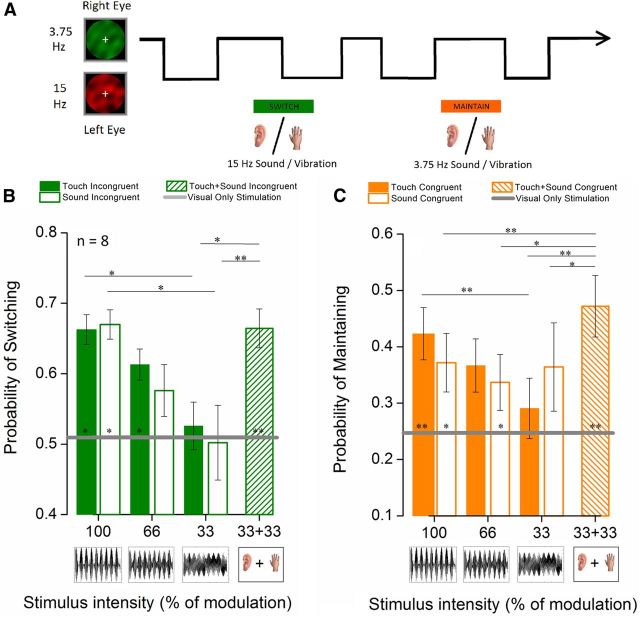Figure 1.
Stimulus intensity-dependent influence of tactile and auditory stimulation on binocular rivalry dynamics. A, Experimental paradigm. Dynamic visual noise was filtered into narrow temporal frequency pass-bands (3.75 and 15 Hz) and presented dichoptically, leading to rivalrous perceptual alternations. During an extended period of binocular rivalry viewing (240 s), a sound or tactile vibration at 3.75 or 15 Hz (amplitude modulations of a 50 Hz carrier frequency) was presented each 10.6 s for period of 2.6 s. The 8 s between each cross-modal stimulus contained only visual stimulation. Observers reported the color (red or green) of the dominant visual frequency continuously using keys on the computer keyboard. B, C, Results. The probability of switching visual perception once (B) or maintaining the same visual perception (C) during a 2.6 s period of cross-modal stimulation for tactile (filled bars) and auditory (empty bars) stimulation is plotted for different cross-modal stimulation intensities (100%, 66%, and 33% amplitude modulation depth of a 50 Hz carrier) and for a trimodal condition in which auditory and tactile stimulation was combined at 33% amplitude modulation (diagonally striped bars). B, C, Gray lines indicate the mean probabilities of switching or maintaining percept, respectively, during periods of visual-only stimulation. All probabilities were statistically compared using a paired-samples t test (N = 8, α = 0.05, df = 7). *p ≤ 0.05. **p ≤ 0.01. Error bars indicate ±1 SEM.

